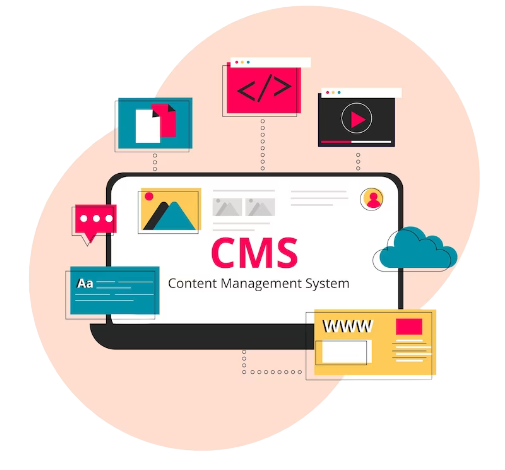By choosing the right headless CMS platform, providing adequate training and resources, collaborating with experienced developers and agencies, and using platforms with built-in features, businesses can effectively overcome these challenges and reap the benefits of headless CMS.
In the world of web development, content management is a critical aspect of building a successful website. Content is the backbone of any website, and it must be managed effectively to ensure its quality, consistency, and relevance. Traditional CMS systems have been the norm for many years, but with the rise of it, developers are looking for new alternatives to manage content. In this blog post, we’ll explore the benefits and challenges of headless CMS for web development.
What is Headless CMS?
It is a content management system that separates content creation and management from the presentation layer. Unlike traditional CMS, It only focuses on back-end content storage and delivery through APIs. This allows developers to build front-end applications using any technology or platform they prefer, without being limited by the CMS’s built-in front-end capabilities.

Benefits of Headless CMS for Web Development
-
Increased Flexibility
It allows developers to use any front-end technology or platform they prefer, which increases the flexibility of web development. This means that developers can create custom front-end applications tailored to their specific needs, rather than being constrained by the built-in front-end capabilities of a traditional CMS.
-
Better Performance
Because It only focuses on back-end content storage and delivery, it can provide better performance than traditional CMS. The separation of concerns reduces the load on the server, resulting in faster page load times and a better user experience.
-
Improved User Experience
It can improve the user experience by providing a personalized and consistent experience across all devices and platforms. Because the content is delivered through APIs, developers can create customized and responsive front-end applications that adapt to the user’s device and preferences.
-
Scalability and Future-Proofing
It provides scalability and future-proofing by separating the content from the presentation layer. This means that as technology and platforms evolve, developers can update and change the front-end application without affecting the content or data stored in the CMS.
Challenges of Headless CMS for Web Development
-
Steep Learning Curve
It can be more challenging to set up and use than traditional CMS, especially for non-technical users. The separation of concerns requires more technical expertise and knowledge to integrate and use the CMS effectively.
-
Limited Content Editing Capabilities
It focuses on back-end content storage and delivery, which means that content editing capabilities may be limited compared to traditional CMS. This can make it more challenging for non-technical users to edit and manage content.
-
Dependence on Third-Party Systems
It often relies on third-party systems and services to provide front-end capabilities and integrations. This dependence can create potential risks, such as service outages, security breaches, or compatibility issues.
Overcoming Headless CMS Challenges
-
Provide Adequate Training and Resources
To overcome the steep learning curve of headless CMS, it’s essential to provide adequate training and resources for developers and content creators. This can include documentation, tutorials, and support services to ensure that users can effectively use and integrate the CMS into their workflow.
-
Collaborate with Experienced Developers and Agencies
Collaborating with experienced developers and agencies can help overcome challenges such as complex integrations and customizations. These professionals can provide expert advice and support to ensure that it has effectively implemented and integrated with other systems.
-
Use Headless CMS Platforms with Built-In Features
Choosing a headless CMS platform with built-in features such as API integrations, multi-language support, and content modeling can help overcome some of the challenges of building and managing headless CMS. These features can reduce the need for extensive customizations and development work, allowing developers and content creators to focus on creating high-quality content and experiences.
Conclusion
Headless CMS is a powerful and flexible solution for web development that offers a range of benefits. Including enhanced scalability, flexibility, and security. However, implementing and managing a headless CMS comes with its own set of challenges. Including a steep learning curve, complex integrations, and customization requirements.
Tanbits offers expert web development services to assist businesses in harnessing the power of headless CMS effectively. By choosing the right headless CMS platform, providing adequate training and resources, and collaborating with experienced developers and agencies. And using platforms with built-in features, businesses can effectively overcome these challenges and reap the benefits of it. Whether it’s delivering personalized content, streamlining content creation, or building complex web applications, headless CMS is a powerful tool. Leveraged with Tanbits’ expertise, can help businesses stay ahead in today’s competitive digital landscape.
BACK










